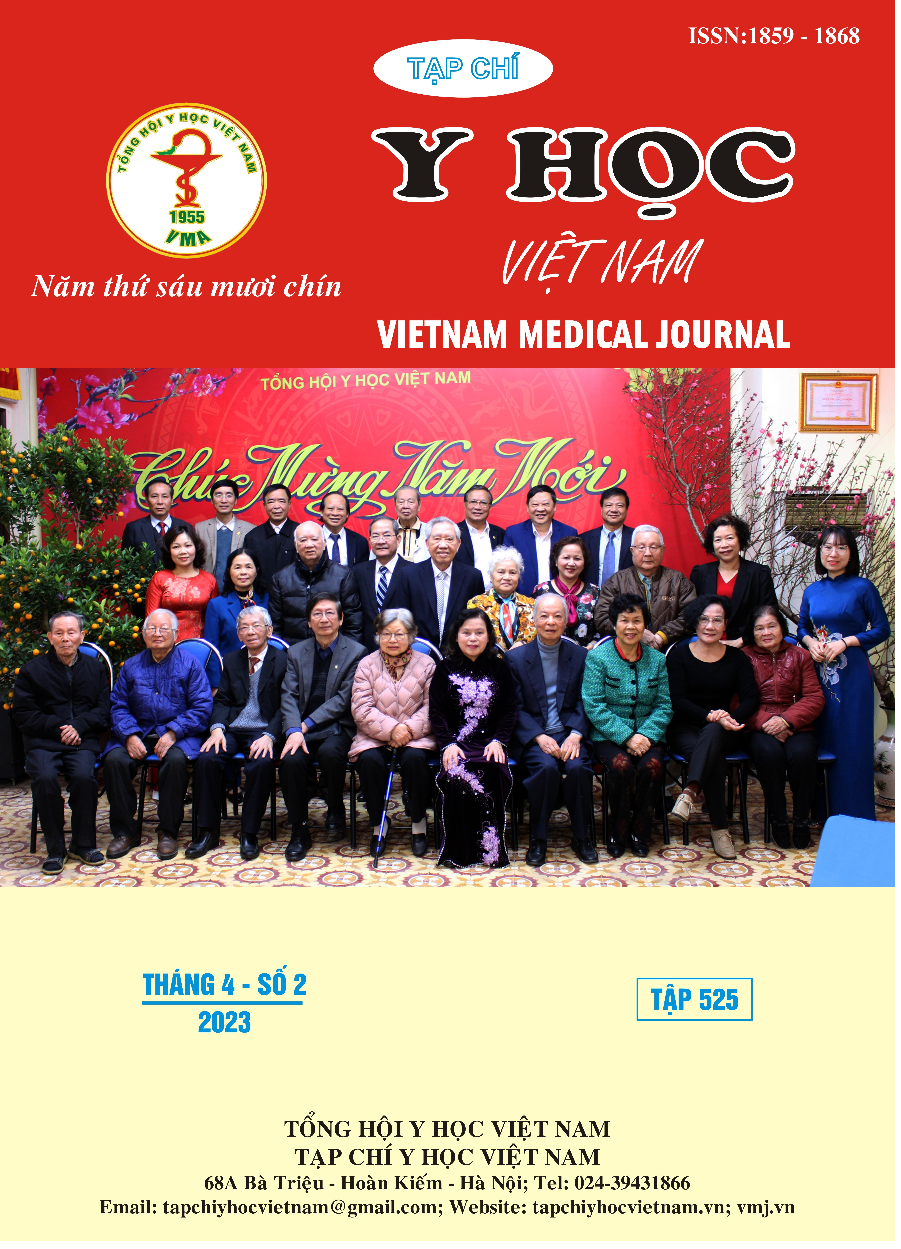CHERECTERICSTICS OF HISTOPATHOLOGICAL PATTERNS IN 300 PATIENTS WITH KIDNEY DISEASE PERFORMED RENAL BIOPSY AT THONG NHAT HOSPITAL
Main Article Content
Abstract
Objectives: To evaluate histopathological patterns in patients with kidney diseases performed renal biopsy at Thong Nhat Hospital. Methods: retrospective, descriptive cross-sectional study. Inclusion criteria: All patients who had renal biopsy at Thong Nhat Hosptital during the period of May 2012 – May 2022. Exclusion criteria: (1): The samples were not adequate for pathological analysis, (2): Second renal biopsy, (3): kidney transplant biopsy. Results: In primary glomerular disease, the percentage of minimal change disease (MCD), IgA nephropathy (IgAN), focal segmental glomerulosclerosis (FSGS), membranous nephropathy (MN) and other lesions were 33.33%; 24.77%; 19.81%; 15.77%, and 6.32% respectively. The percentage of IgAN and Lupus nephritis (LN) in group <60 years old vs group ≥60 years old was 21.70% and 11.30% vs 7.10% and 1.4% respectively (p<0.05). The percentage of DN and tubular interstitial disease (TID) in group <60 years old vs group ≥60 years old was 3.50% and 2.60% vs 11.40% and 12.80% respectively (p<0.05). The percentage of MN was 17.70% vs 7.10% in 2017- 2022 vs 2012- 2017 (p<0.001). Conclusions: Through a survey of 300 kidney biosy samples at Thong Nhat Hospital, we found that a mong primary glomerular diseases, MCD is the most common, followed by IgA nephropathy and FSGS. IgA nephropathy and Lupus nephritis were more common in the young. Otherwise, DN and TID were more common in the elderly. MCD account for a low percentage of patients with kidney biosy indication as nephrotic syndrome. IgA nephropathy and FSGS were common in patients with kidney biosy indication as nephritic syndrome. IgA nephropathy is the most common in patients with kidney biosy indication as asymtomatic urinary abnormalities The incidence of MN has increased significantly in recent years.
Article Details
Keywords
Renal biopsy, kidney histopathology, minimal change disease, IgA nephropathy, membranous glomerulonephritis
References
2. Hu R., Quan S., Wang Y., Zhou Y., Zhang Y., Liu L., et al. (2020). Spectrum of biopsy proven renal diseases in Central China: a 10-year retrospective study based on 34,630 cases. Sci Rep 10, 10994.
3. Yim T, Kim SU., Park S., Lim JH., Jung HY., Cho JH., et al. (2020). Patterns in renal diseases diagnosed by kidney biopsy: A single-center experience. Kidney Res Clin Pract. 39 (1), pp 60-69.
4. Mai Thị Hiền. (2017). Nghiên cứu đặc điểm lâm sàng, cận lâm sàng, mô bệnh học và bước đầu theo dõi điều trị bệnh thận IgA. Luận án tiến sĩ y học. Hà Nội.
5. Polito MG., de Moura LA., Kirsztajn GM. (2010). An overview on frequency of renal biopsy diagnosis in Brazil: clinical and pathological patterns based on 9617 native kidney biopsies. Nephrol Dial Transplant, 25 (2), pp 490-496.
6. Churg J., Bernstein J., Glassock RJ. (1995). Renal disease: classification and atlas of glomerular diseases. 2nd ed. Igaku-Shoin; New York.
7. Beniwal P., Pursnani L., Sharma S., Garsa RK., Mathur M., Dharmendra P., et al. (2016). A clinicopathologic study of glomerular disease: A single-center, five-year retrospective study from Northwest India. Saudi J Kidney Dis Transpl. 27 (5), pp 997-1005.
8. Shin HS., Cho DH., Kang SK., Kim HJ., Kim SY., Yang JW. et al. (2017). Patterns of renal disease in South Korea: a 20-year review of a single-center renal biopsy database. Ren Fail. 39(1), pp 540-546.
9. Sugiyama H., Yokoyama H., Sato H., Saito T., Kohda Y., Nishi S., et al. (2011). Japan Renal Biopsy Registry: the first nationwide, web-based, and prospective registry system of renal biopsies in Japan. Clin Exp Nephrol, 15 (4), pp 493–503.
10. Nguyễn Bách., Huỳnh Ngọc Linh., Lê Việt Thắng. (2015). Khảo sát đặc điểm tổn thương mô bệnh học ở bệnh nhân người lớn mắc bệnh thận. Tạp chí Y học Quân sự. 311, pp 54-58.


